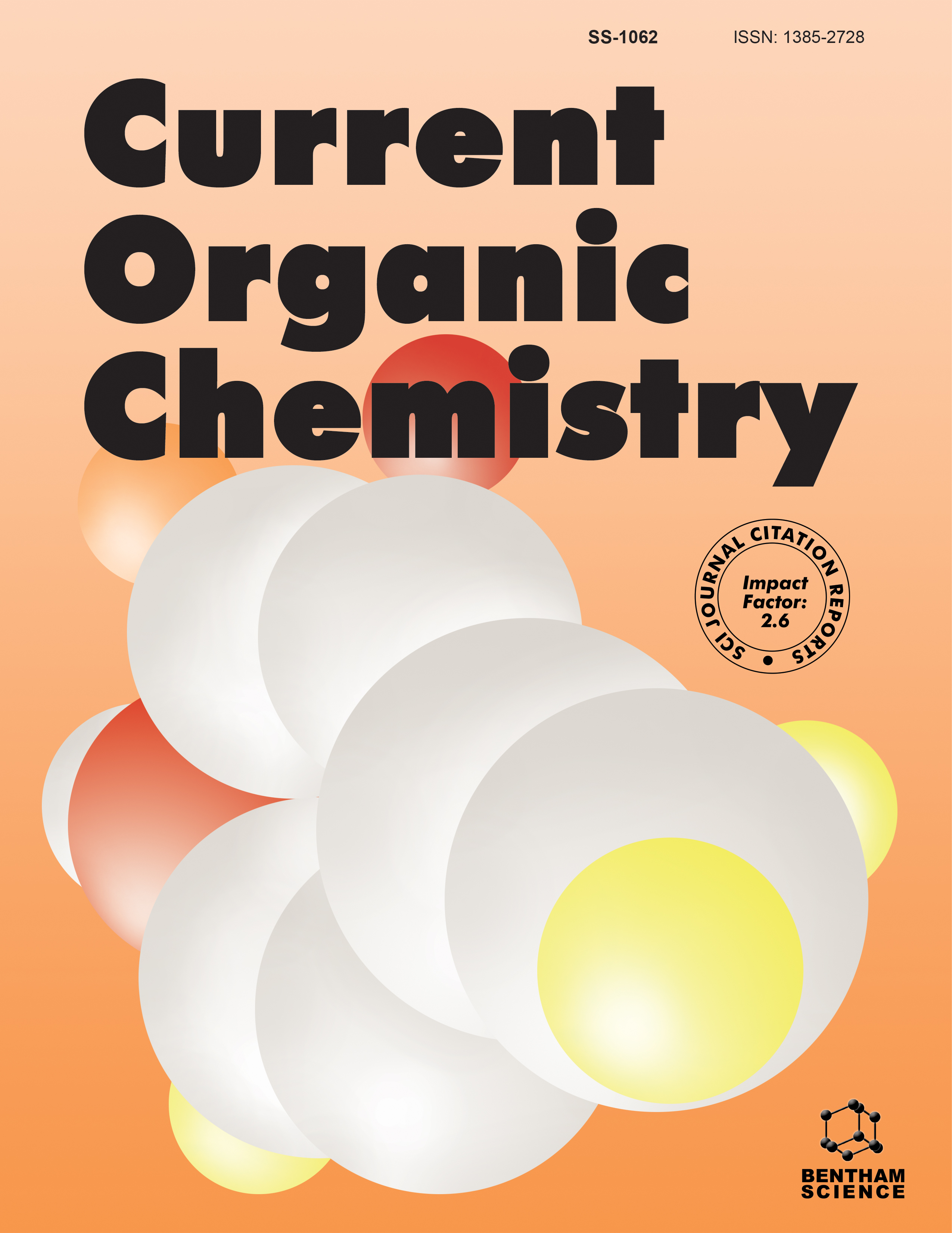- Home
- A-Z Publications
- Current Organic Chemistry
- Previous Issues
- Volume 22, Issue 23, 2018
Current Organic Chemistry - Volume 22, Issue 23, 2018
Volume 22, Issue 23, 2018
-
-
Recent Advances in Transition-Metal-Catalyzed Halides Formation
More LessAuthors: Xiaolin Shi and Dayong ShiHalides, as important starting materials, construct complex structures and notable structural motifs in natural products and manufactured drugs. Transition-metalcatalyzed halides formation has emerged as a particular approach to generating organohalides, which is predictable to compete as an alternative to more established synthetic methods. This review attempts to provide different methods to catalyze the synthesis of org Read More
-
-
-
Anti-cancer Nitrogen-Containing Heterocyclic Compounds
More LessAuthors: Zahra Hosseinzadeh, Ali Ramazani and Nima Razzaghi-AslCancer is one of the leading causes of death worldwide. Mutation of the cell regulates genes and protein causing cancer. Surgery, radiotherapy, and the use of anticancer agents are the current therapy of cancer despite their side effects. The general area of research relates to heterocyclic chemistry. The purpose of the article is to review the most recent advances in nitrogen-containing heterocyclics as possible chemothera Read More
-
-
-
Synthetic Approaches Towards Benzimidazoles by the Reaction of o-Phenylenediamine with Aldehydes Using a Variety of Catalysts: A Review
More LessAuthors: Jyoti Sharma, Pradeep K. Soni, Ravi Bansal and Anand K. HalveThe benzimidazole moiety is a privileged heterocyclic nucleus which has been used broadly in medicinal chemistry. Benzimidazole derivatives are useful building blocks for the development of important compounds of biological and therapeutic interest. The developments of facile synthetic routes to achieve access to these molecules are of prime interest, therefore synthetic organic chemists focused to invent an efficient m Read More
-
-
-
Click Synthesis, Anticancer Activity and Molecular Docking Studies on Pyridazinone Scaffolds
More LessA series of triazolo-pyridazinone derivatives were prepared through the standard click reactions of 4,6-diphenyl-2-(prop-2-yn-1-yl)pyridazin-3(2H)-one 1, possessing a free terminal alkyne group with a selection of substituted aryl azides 2-9. The cytotoxicity and in vitro anticancer investigation of the new compounds were conducted against four different human tumor cell lines, including breast adenocarcinoma MCF-7, hepatoc Read More
-
-
-
Nanostructured Multiporphyrin Dendrimers: Synthesis, Characterization and Their Spectroscopic Properties
More LessA series of resorcinarene-PAMAM-porphyrin dendrimers was synthesized. The nanostructures were characterized by IR, 1H and 13C NMR, UV-vis absorption, electrospray ionization and MALDI-TOF mass spectrometry. The morphological properties were characterized by High-Resolution Transmission Electron Microscopy (HRTEM). The distance between the resorcinarene group and the porphyrin group was variable: two di Read More
-
Volumes & issues
-
Volume 29 (2025)
-
Volume 28 (2024)
-
Volume 27 (2023)
-
Volume 26 (2022)
-
Volume 25 (2021)
-
Volume 24 (2020)
-
Volume 23 (2019)
-
Volume 22 (2018)
-
Volume 21 (2017)
-
Volume 20 (2016)
-
Volume 19 (2015)
-
Volume 18 (2014)
-
Volume 17 (2013)
-
Volume 16 (2012)
-
Volume 15 (2011)
-
Volume 14 (2010)
-
Volume 13 (2009)
-
Volume 12 (2008)
-
Volume 11 (2007)
-
Volume 10 (2006)
-
Volume 9 (2005)
-
Volume 8 (2004)
-
Volume 7 (2003)
-
Volume 6 (2002)
-
Volume 5 (2001)
-
Volume 4 (2000)
Most Read This Month
Article
content/journals/coc
Journal
10
5
false
en


